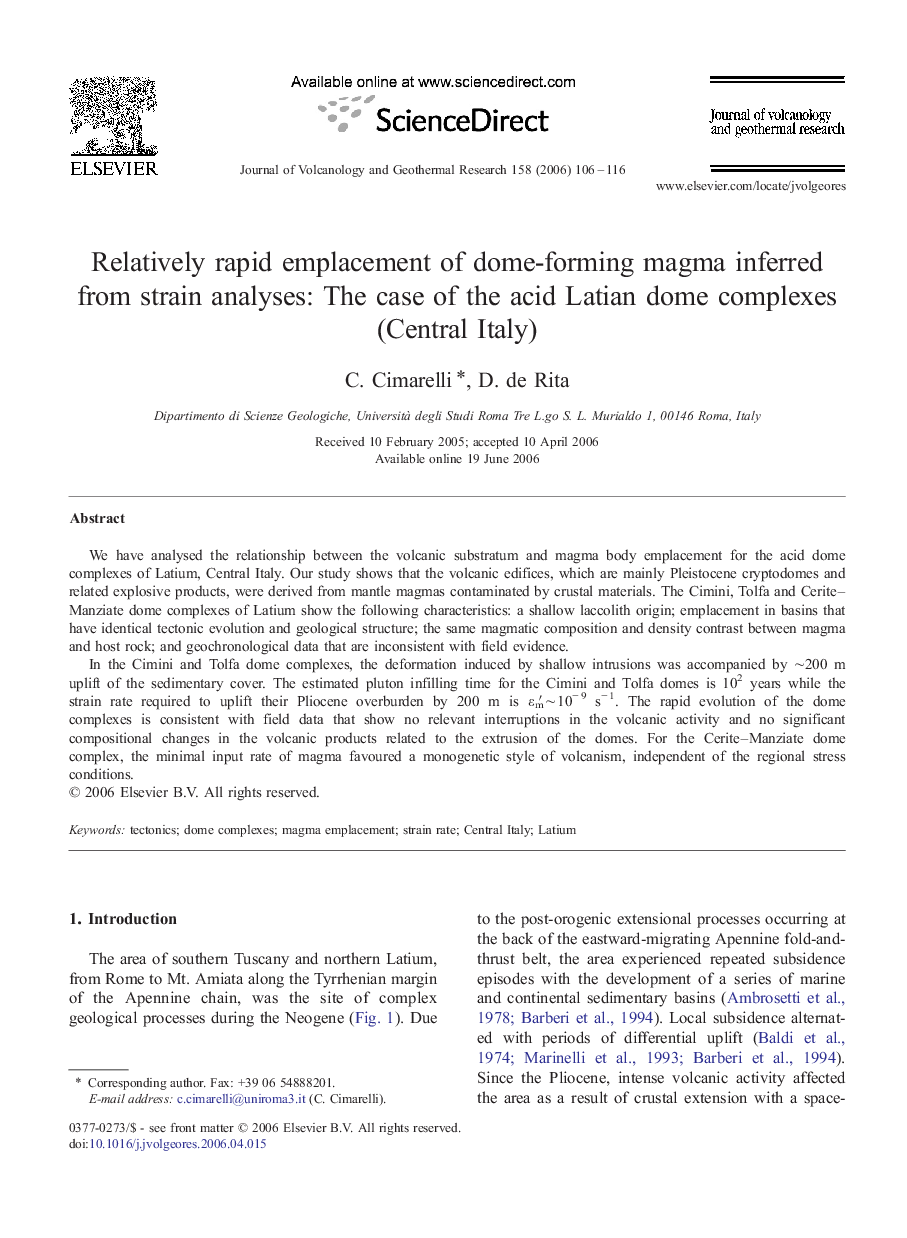| Article ID | Journal | Published Year | Pages | File Type |
|---|---|---|---|---|
| 4715335 | Journal of Volcanology and Geothermal Research | 2006 | 11 Pages |
We have analysed the relationship between the volcanic substratum and magma body emplacement for the acid dome complexes of Latium, Central Italy. Our study shows that the volcanic edifices, which are mainly Pleistocene cryptodomes and related explosive products, were derived from mantle magmas contaminated by crustal materials. The Cimini, Tolfa and Cerite–Manziate dome complexes of Latium show the following characteristics: a shallow laccolith origin; emplacement in basins that have identical tectonic evolution and geological structure; the same magmatic composition and density contrast between magma and host rock; and geochronological data that are inconsistent with field evidence.In the Cimini and Tolfa dome complexes, the deformation induced by shallow intrusions was accompanied by ∼ 200 m uplift of the sedimentary cover. The estimated pluton infilling time for the Cimini and Tolfa domes is 102 years while the strain rate required to uplift their Pliocene overburden by 200 m is εm′ ∼ 10− 9 s− 1. The rapid evolution of the dome complexes is consistent with field data that show no relevant interruptions in the volcanic activity and no significant compositional changes in the volcanic products related to the extrusion of the domes. For the Cerite–Manziate dome complex, the minimal input rate of magma favoured a monogenetic style of volcanism, independent of the regional stress conditions.
